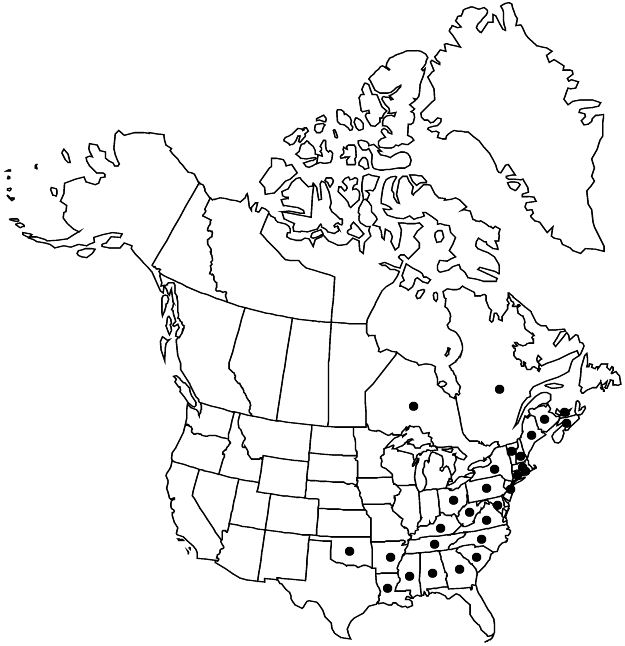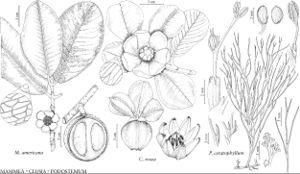Difference between revisions of "Podostemum ceratophyllum"
Fl. Bor.-Amer. 2: 165, plate 44. 1803.
FNA>Volume Importer |
imported>Volume Importer |
||
| (One intermediate revision by the same user not shown) | |||
| Line 71: | Line 71: | ||
|publication year=1803 | |publication year=1803 | ||
|special status=Illustrated | |special status=Illustrated | ||
| − | |source xml=https:// | + | |source xml=https://bitbucket.org/aafc-mbb/fna-data-curation/src/2e0870ddd59836b60bcf96646a41e87ea5a5943a/coarse_grained_fna_xml/V6/V6_112.xml |
|genus=Podostemum | |genus=Podostemum | ||
|species=Podostemum ceratophyllum | |species=Podostemum ceratophyllum | ||
Latest revision as of 22:19, 5 November 2020
Roots flattened or elliptic, 0.3–1.1 mm diam. Stems 1.8–9 mm apart, 0.4–300 × 0.5–1.5 mm at base. Leaves: stipules caducous (absent from leaves 3–9 nodes back from stem apex), 0.5–3.6 mm, margins entire; petiole arising perpendicular to stem axis or upright, 0.4–59 mm; blade 1–13 times dichotomously divided, 1.7–142 mm, ultimate divisions flattened, spatulate, linear, or awl-shaped, 0.2–40 × 0.05–0.8 mm, central vein faint or absent. Inflorescences: spathella 1.5–6.2 × 0.8–1.8 mm. Pedicels 0.4–2.9 mm, to 0.6–10.5 mm in anthesis, 0.5–9 mm in fruit. Flowers: tepals linear or awl-shaped, apex acute, lateral tepals 0.7–2 mm, andropodial tepals 0.1–1.1 mm; andropodium 0.1–3.3 mm, 0.7–4.3 mm in anthesis; filaments 0.2–0.9 mm, 0.3–2 mm in anthesis; anthers 0.5–1.5 × 0.4–0.8 mm; ovary 0.7–2.6 × 0.4–1.4 mm; stigmas 0.3–1.4 mm, 0.4–1.5 mm in anthesis. Capsules 1.4–3.1 × 0.7–1.7 mm. Seeds 0.4–0.8 × 0.5–0.8 mm.
Phenology: Flowering Jun–Sep.
Habitat: Attached to rocks and other solid substrata in swift currents
Elevation: 0–800 m
Distribution

N.B., N.S., Ont., P.E.I., Que., Ala., Ark., Conn., Ga., Ky., La., Maine, Md., Mass., Miss., N.H., N.J., N.Y., N.C., Ohio, Okla., Pa., R.I., S.C., Tenn., Vt., Va., W.Va., West Indies (Dominican Republic), Central America (Honduras).
Discussion
Podostemum ceratophyllum is listed as rare, endangered, or of special concern in some regions. Paucity of appropriate habitat and human disturbances (for example, siltation, damming) have contributed to conservation concerns.
Selected References
None.
